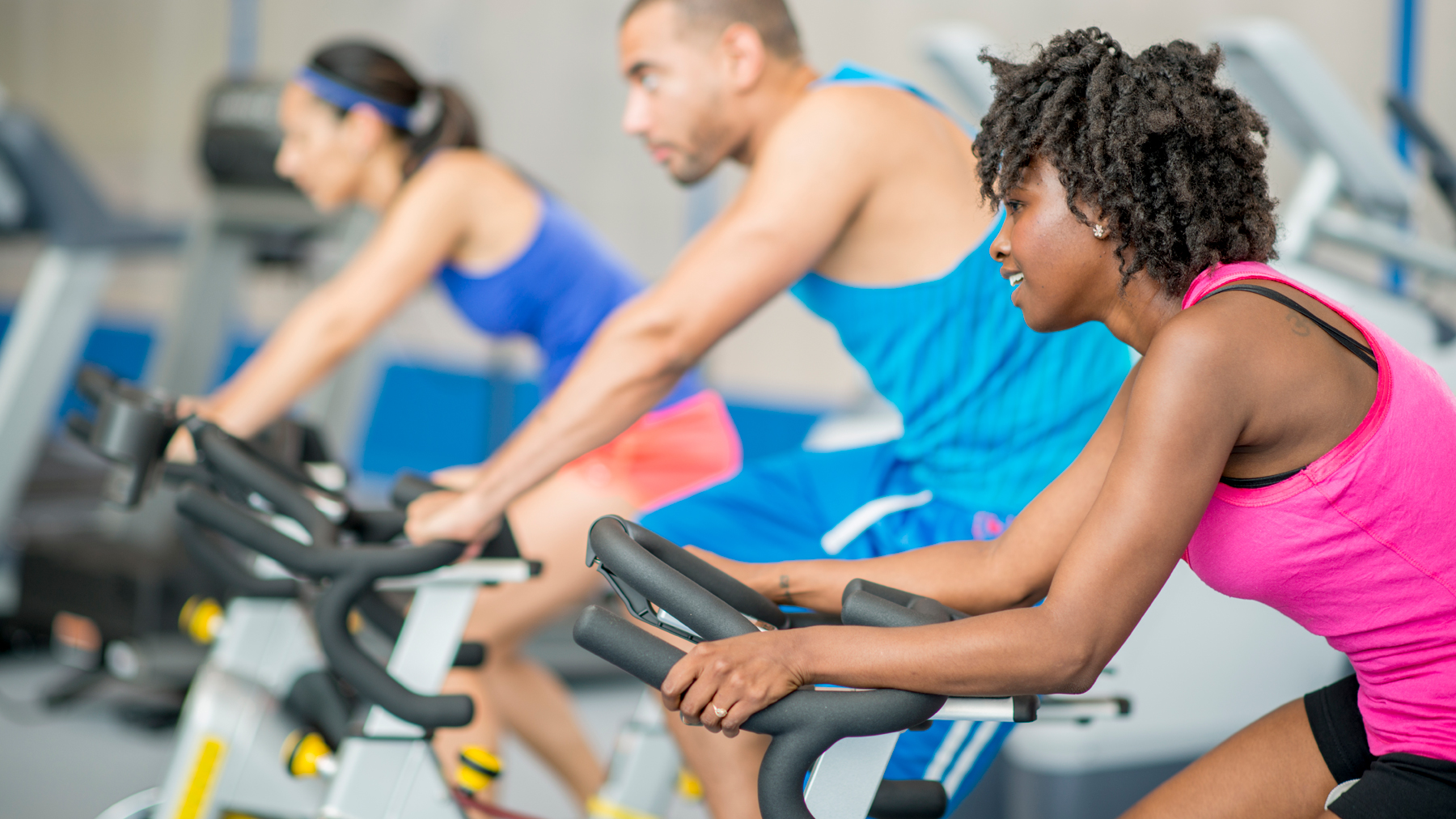Is cycling good for weight loss?
Is cycling good for weight loss? Top fitness experts reveal the benefits of getting on the saddle

Found yourself asking if cycling is good for weight loss? The good news is, if you’re looking to get fitter and look leaner by shedding fat, then fitness in the form of cycling is probably the best route to go down.
Not only is cycling out on the road or on one of the best exercise bikes good for weight loss, but - as we’ll find out later on - it boasts endless health benefits, both physically and mentally. It’s also recognized as a favorite among fitness enthusiasts because it’s enjoyable, easy to slot into a busy day, and something you can do year-round, indoors or out.
But how exactly can cycling help you to lose weight, and why is it a good choice for those with this very goal? We have enlisted the help of various fitness experts to answer these very questions.
Read on for some top tips on cycling for health, where we’ll compare the indoor “spin” to more conventional outdoor cycling, discuss whether it is better than running, and offer advice for those wanting to start cycling more often.
Is cycling good for weight loss?
Before we get into how cycling can help you lose weight, let’s look at the idea of weight loss in more detail.
If losing weight is your main goal, exercising can, of course, offer up advantages. This is thanks to its ability to burn calories, which - naturally - plays a key role in weight loss. However, while exercising is one of the most common strategies employed by those trying to shed extra pounds, it’s not the only way.
As the NHS notes, managing your weight comes down to a balancing act, and the equation is simple. If you eat more calories than you burn within a day, you’ll eventually gain weight. On the flip side, if you eat fewer calories and/or burn more calories (through physical activity) than your daily expenditure, you’ll lose weight. To put it simply, if you really want to lose weight, nutrition is just as, if not more important than the exercise you do.
Start your week with achievable workout ideas, health tips and wellbeing advice in your inbox.
As personal trainer and human movement and elite performance specialist, Luke Worthington, notes, planned exercise makes up only around 10% of our daily calorific expenditure. So, even if you train specifically for fat loss, then you would still need to address energy balance and protein intake (in other words, diet) in order to create measurable changes to body composition.
“When it comes to improving any of the measurable health markers a combination of full body resistance training, low-intensity cardio, and a small amount of high-intensity cardio is by a considerable margin, the most effective, efficient, and sustainable method,” he says.
Still, if you’re looking to find out which type of exercise can help alongside your diet you’ll be pleased to hear that cycling is up there.
To understand more, we spoke to Head Coach at Performance Physique, Arj Thiruchelvam, who has worked training GB Olympians as well as a UK Athletics Sprint and Jumps Coach in his 17 years in the fitness industry.
“While cycling is an aerobic activity, varying levels of resistance mean the hamstrings, quads, and calf muscles can develop,” Thiruchelvam said. “Greater muscle mass means increased calorie burn and therefore cycling can contribute to achieving a calorie deficit.”
In the long term, he adds that if you are more inclined to do something, you’re more likely to maintain the activity and therefore work towards improving your health and potentially towards a weight loss goal.
"Above all else, cycling is more inclusive than other forms of exercise, it’s easy to control the pace and provides less impactful forces which many people new to exercise struggle with.”
Not all effective workouts have to be high impact, low impact exercises are friendly on the joints and will get results.

Is outdoor cycling better than indoor cycling for weight loss?
One question that many people ask, especially those new to cycling, is if there is any difference between indoor and outdoor cycling when it comes to its impact on weight loss.
Founder and lead trainer of London’s top boutique cycle studio, Boom Cycle, Hilary Rowland, says it doesn't make a difference if you cycle indoors or outdoors, especially in regards to health.
“There are advantages to both types of cycling,” she explains. “The key for both toning and cardio fitness is heavy resistance/gears and speed. The greater amount of both, the more you will challenge your muscles and cardiovascular system.”
Is cycling or running better for weight loss?
As the two most popular forms of exercise, it’s no surprise that cycling and running are often compared to one another. But which is the most effective for weight loss?
According to The American College of Sports Medicine, the number of calories you burn in either exercise depends on the intensity and amount of time you do it. However, the college did find that running burns slightly more calories per hour than cycling, so it could help you lose weight faster. Generally, running burns 566 to 839 calories an hour, while cycling at a vigorous pace burns 498 to 738 calories an hour. Nevertheless, your age, weight, gender, and other factors also determine how many calories you’ll burn during the participation in either exercise.
Still, cycling is widely known as being better for you, generally. Rowland explains that this is because cycling is a “low-impact” exercise and therefore, “better for anyone with injuries than running” due to it placing less pressure on your joints.
How to start cycling more often
Now we’re aware of the benefits cycling can bring and how much more accessible it is than many other forms of cardio, it’s time to look at how to make cycling a regular form of exercise within your weekly fitness routine.
The most obvious way to make cycling a part of your daily routine is to invest in an exercise bike for the home. This makes getting on a bike easier than ever and doesn't require a gym membership or having to travel there to work out. However, if an exercise bike isn’t in your budget, you could invest in a cheaper bicycle for cycling to work on and get your calorie burn in that way.
According to Dr Edward R. Laskowski, a professor at College of Medicine, Mayo Clinic, humans only need at least 150 minutes of moderate aerobic activity per week to remain fit and healthy. So you’d only need to cycle to work three times a week for a 20-minute commute, each way, to get your recommended weekly amount of exercise in.
Rowland says that integrating cycling into everyday life as your main mode of transportation can be as easy as riding a bike.
“There are bike rental providers in many big cities, all of which are making it easier than ever to use a bike - especially if you don't have room to store one in your home,” she says.
If that’s not an option for you, most gyms have exercise bikes in the cardio machine sections if you already have a membership and don’t want to give it up.
“You can also make indoor cycling part of your daily routine if you have a bike at home or at a studio or gym near you,” Rowland adds. “Many studios offer discounted monthly subscriptions for those who want to attend often.”
Fit&Well's answers to fitness related questions don't end here, you can also find out the answer to queries like does walking build muscle or learn how to train obliques for more defined abs.
Lee Bell is a London-based journalist, copywriter, specializing in all things tech and lifestyle. He is also a qualified personal trainer. He started his journalism career a decade ago as a reporter covering the latest gadgets and innovations at tech tabloid The Inquirer. Lee went freelance in 2016 to broaden his expertise, moving into news, reviews and feature writing for a host of national print and online lifestyle titles such as GQ, Forbes, Esquire, Men’s Health, Wired, The Metro, and The Mirror. He has an insatiable appetite for travel, Dharma yoga, and the odd outdoor challenge.

